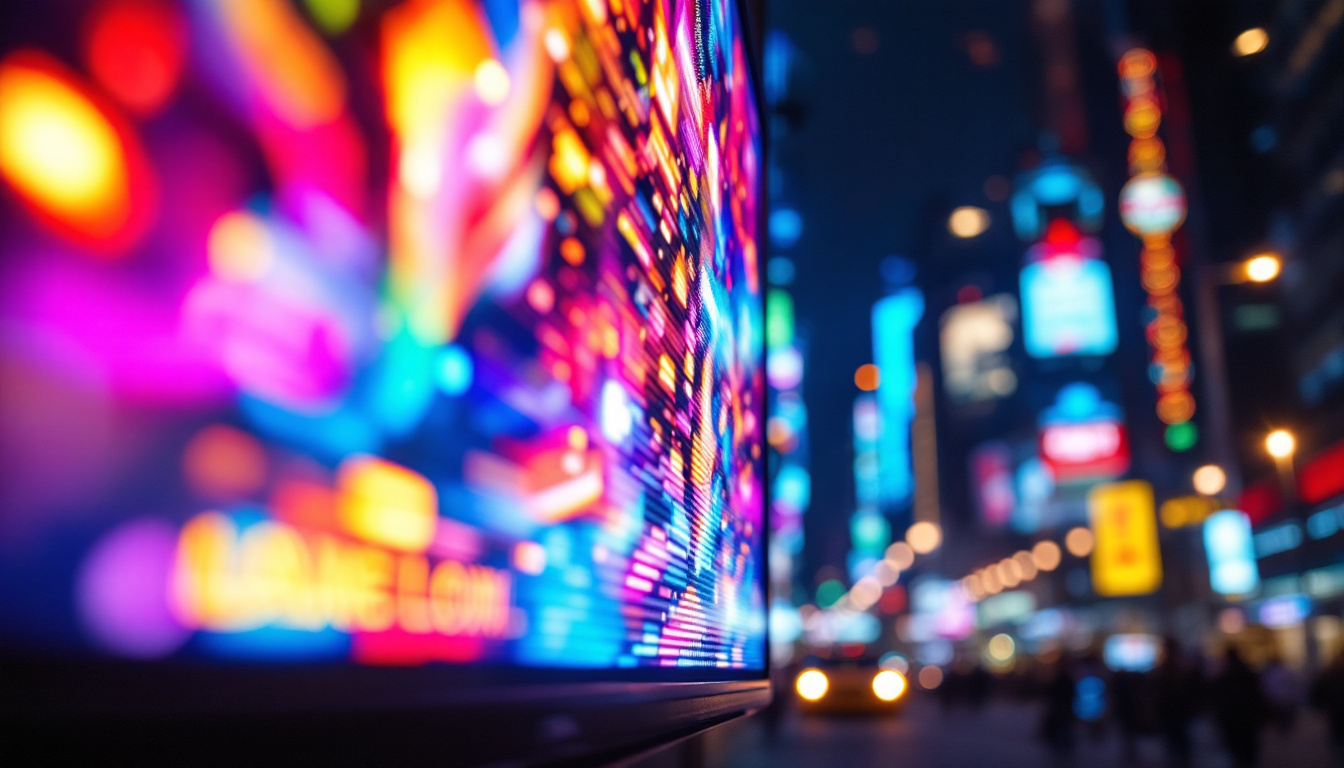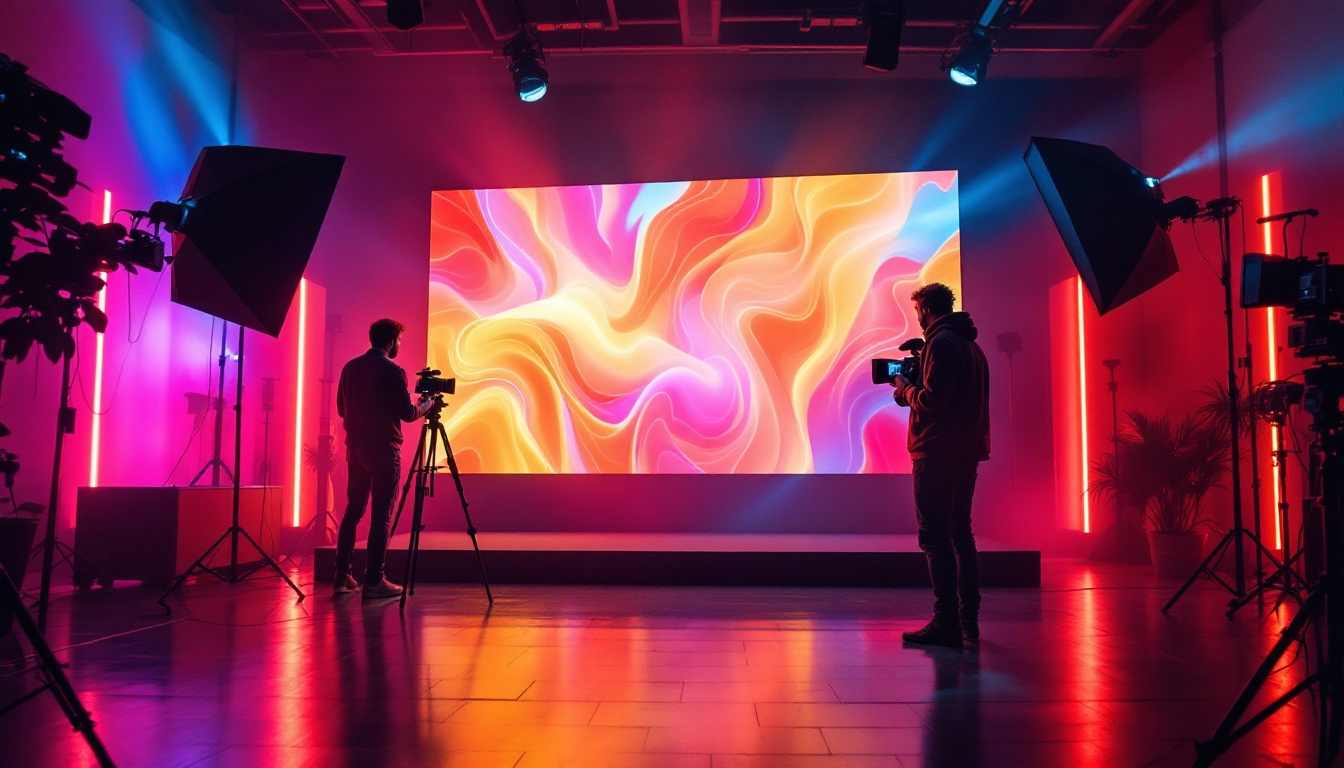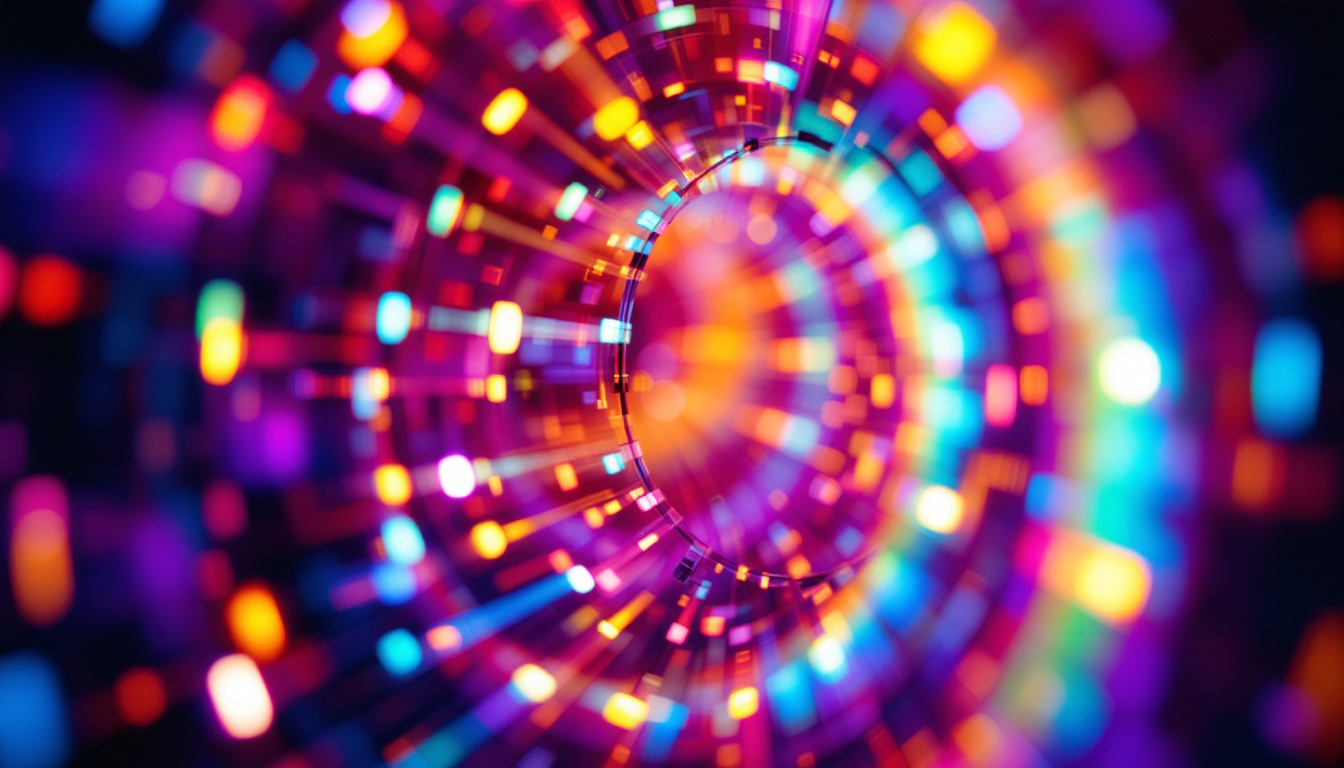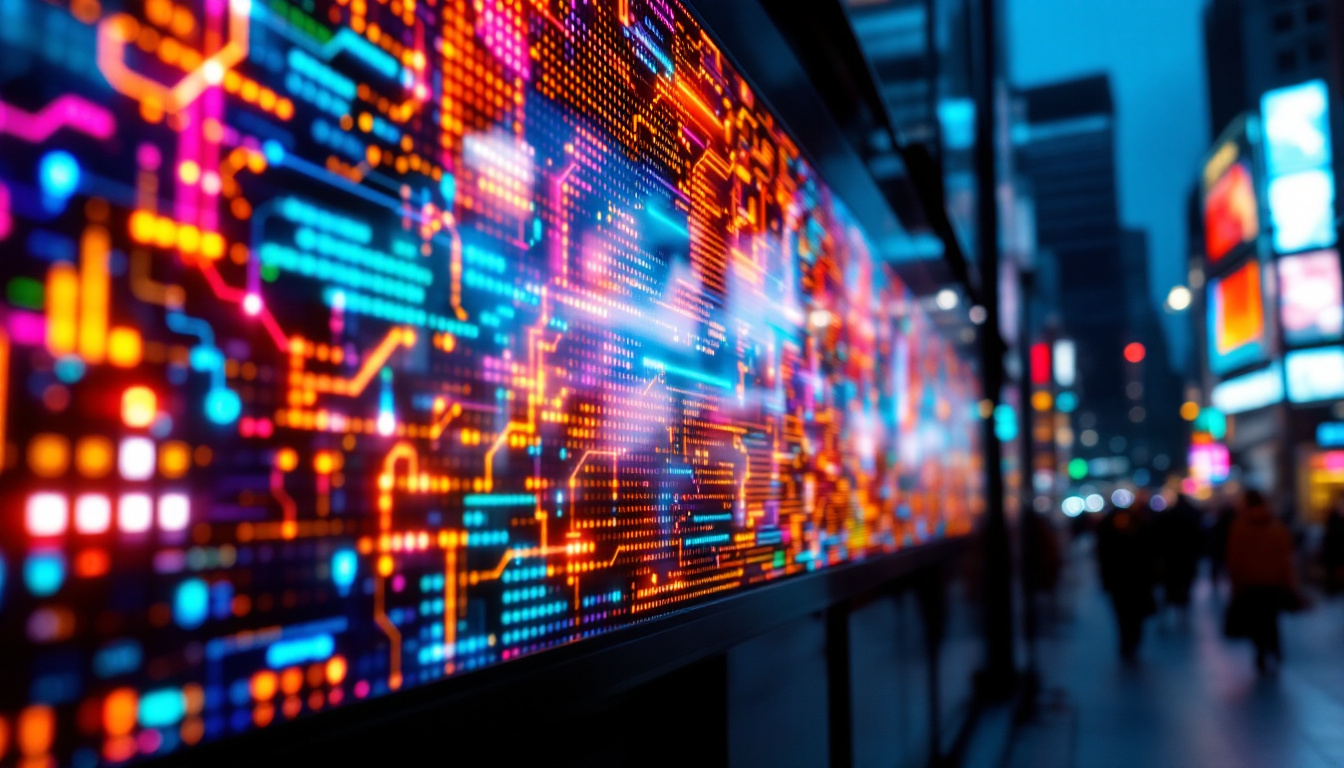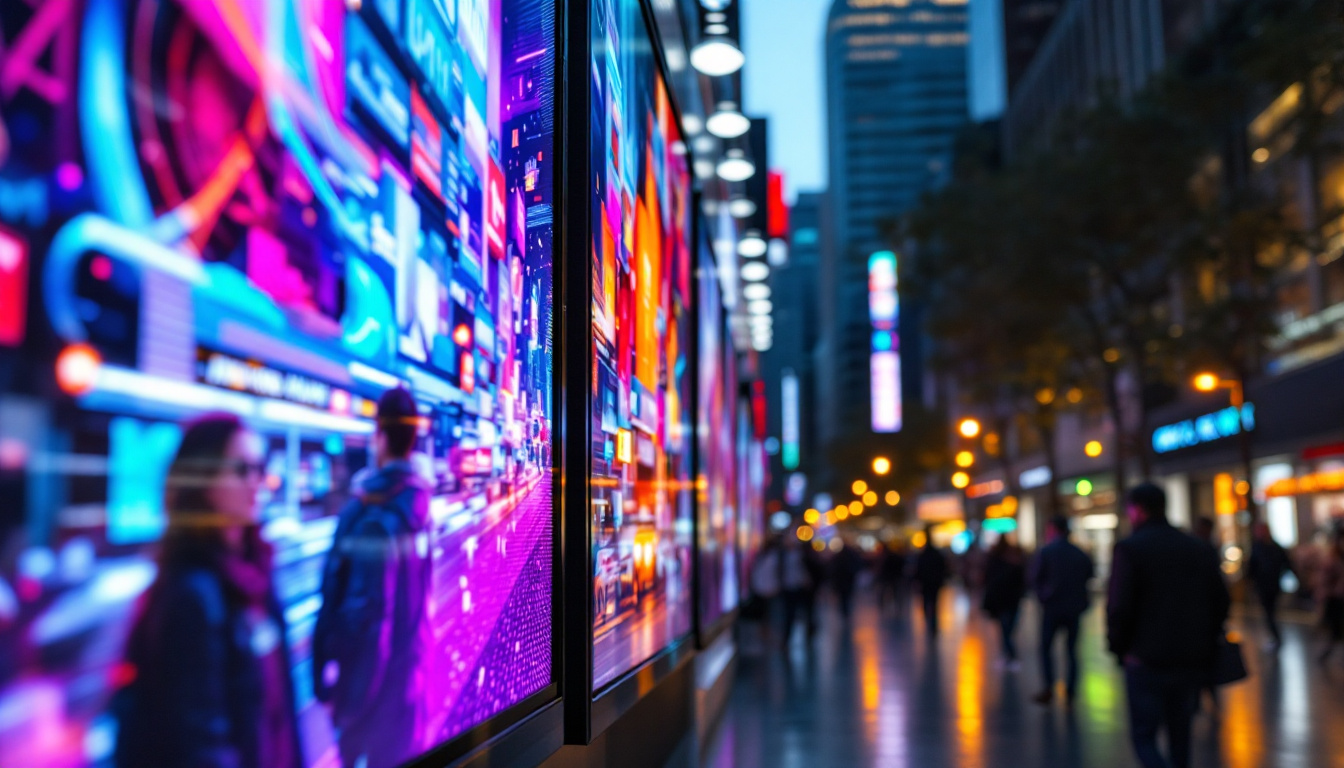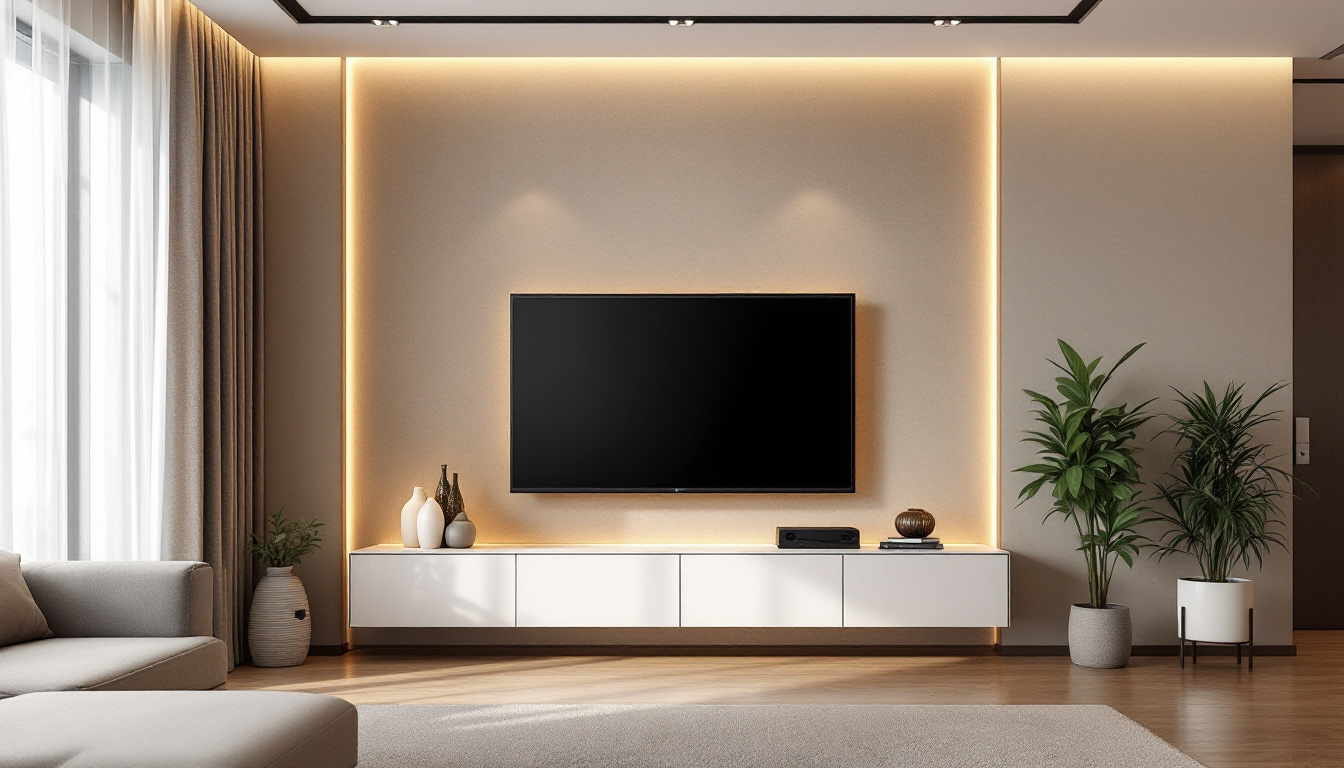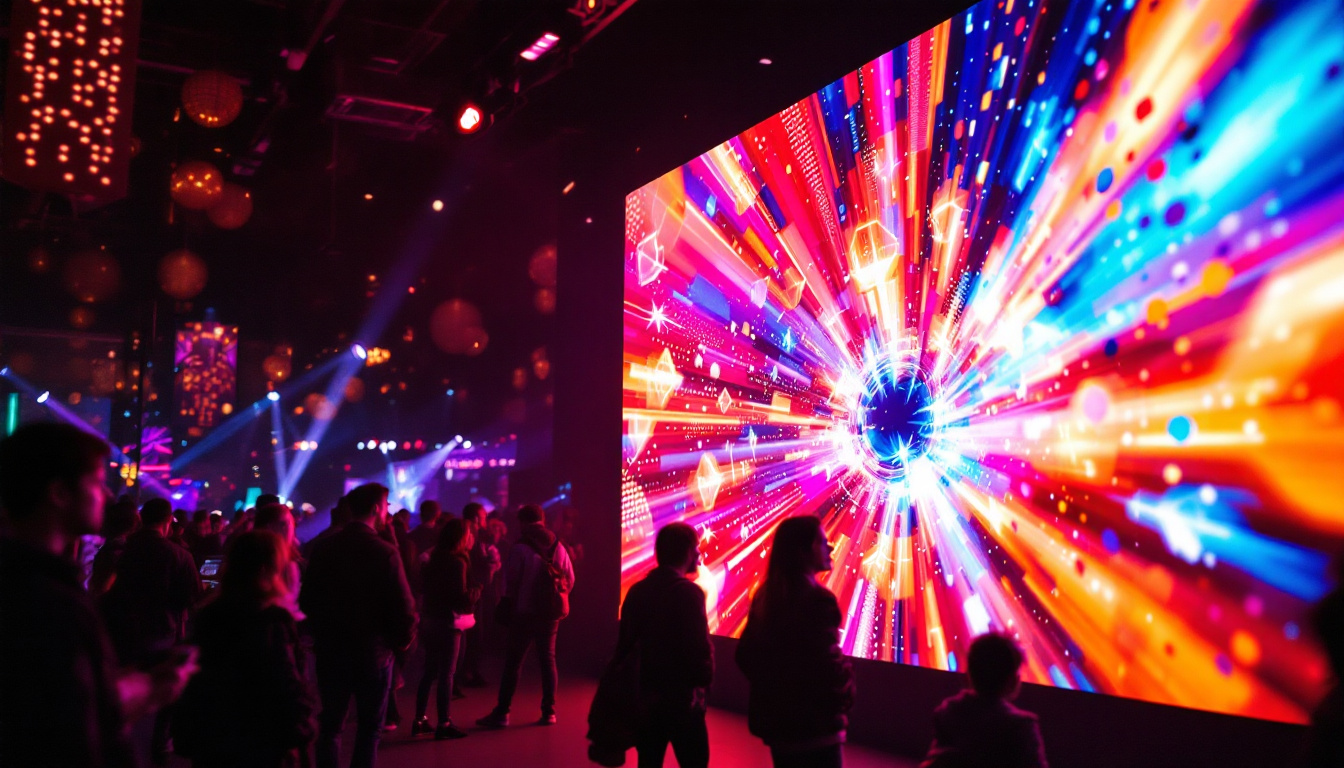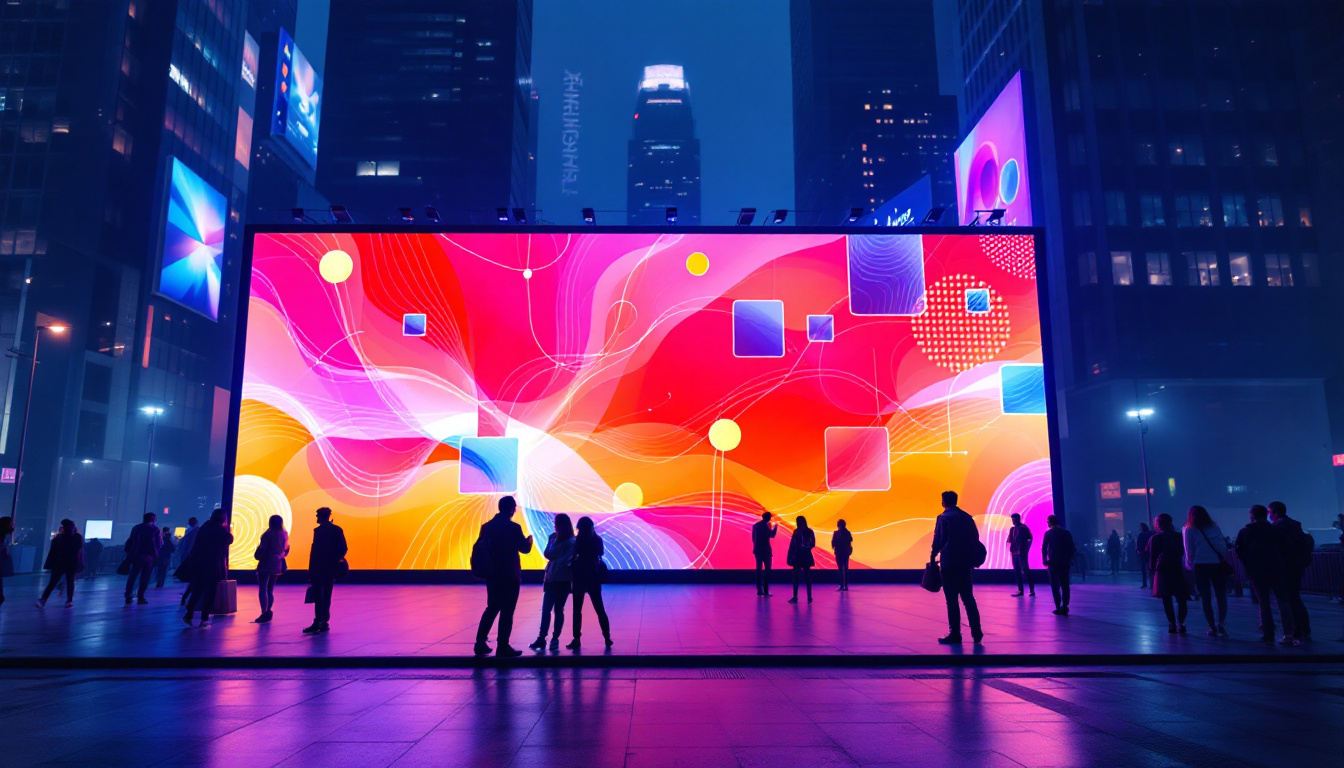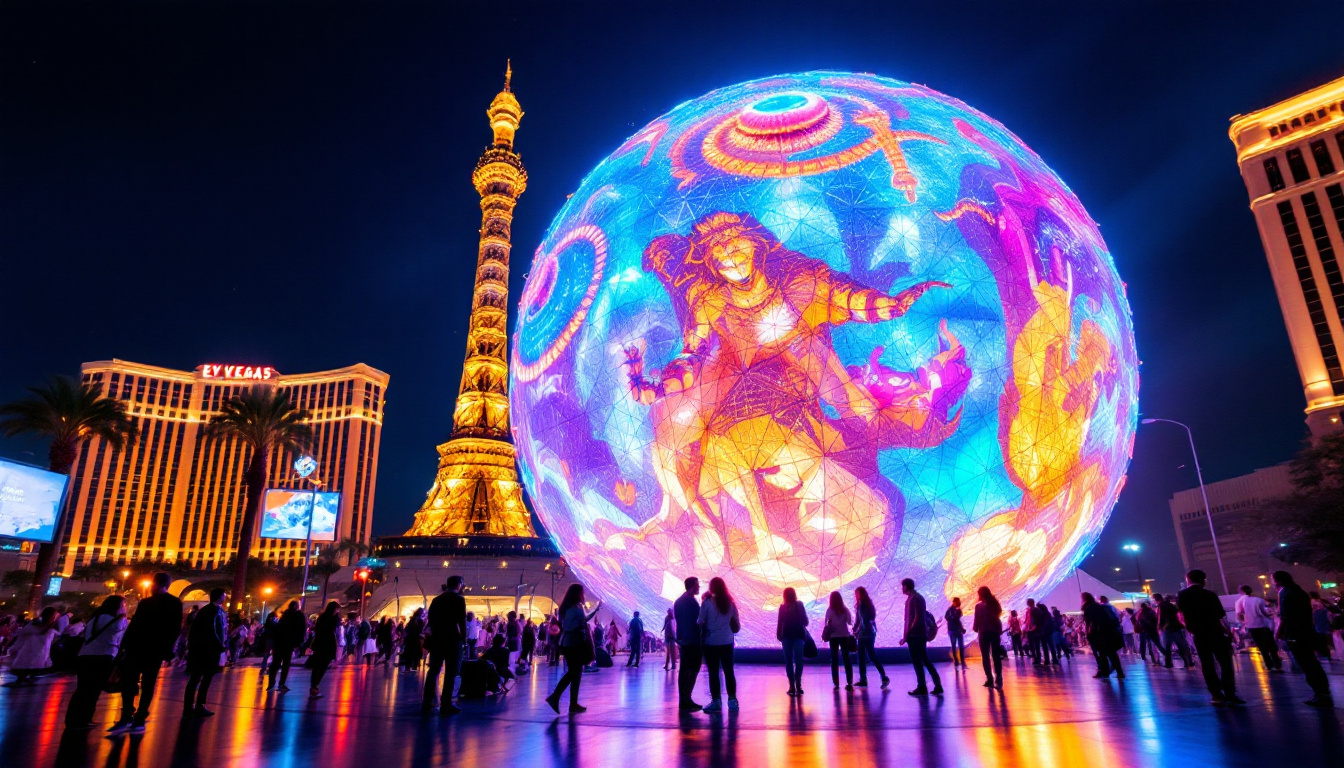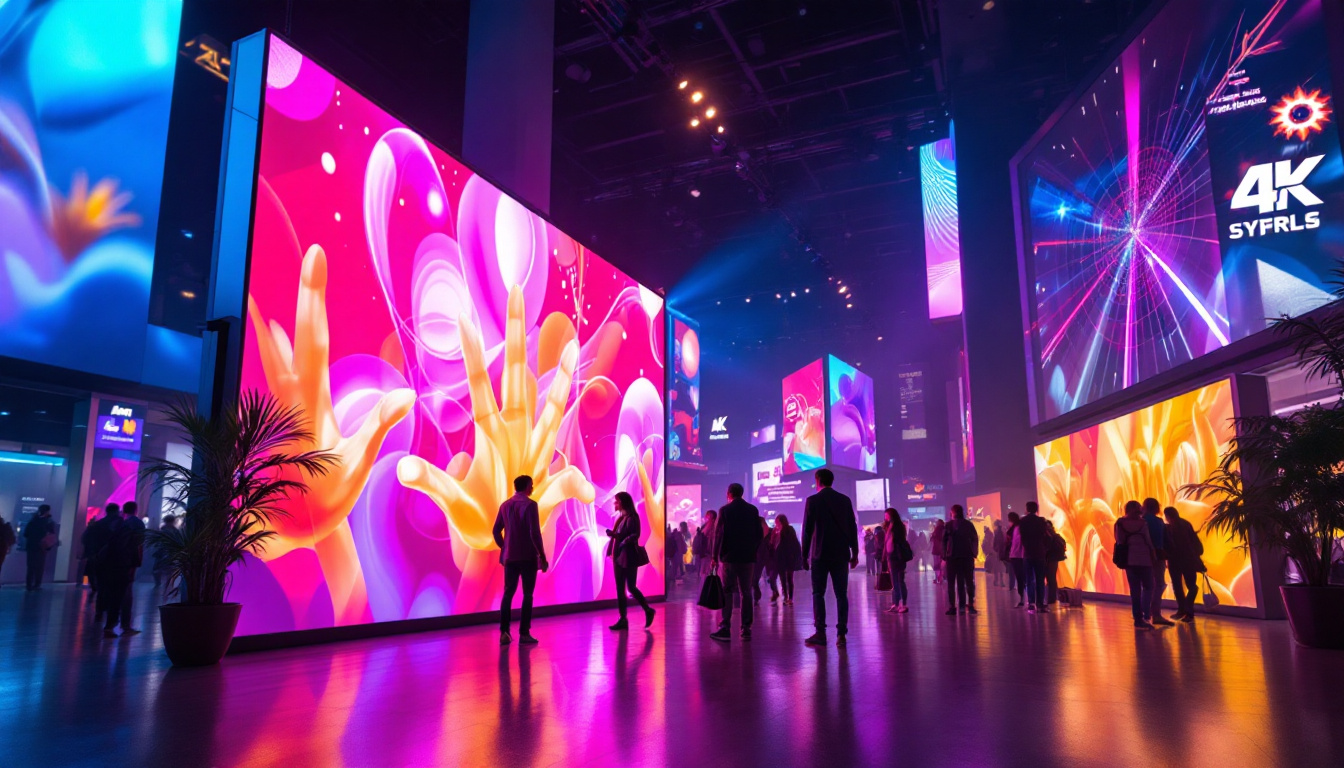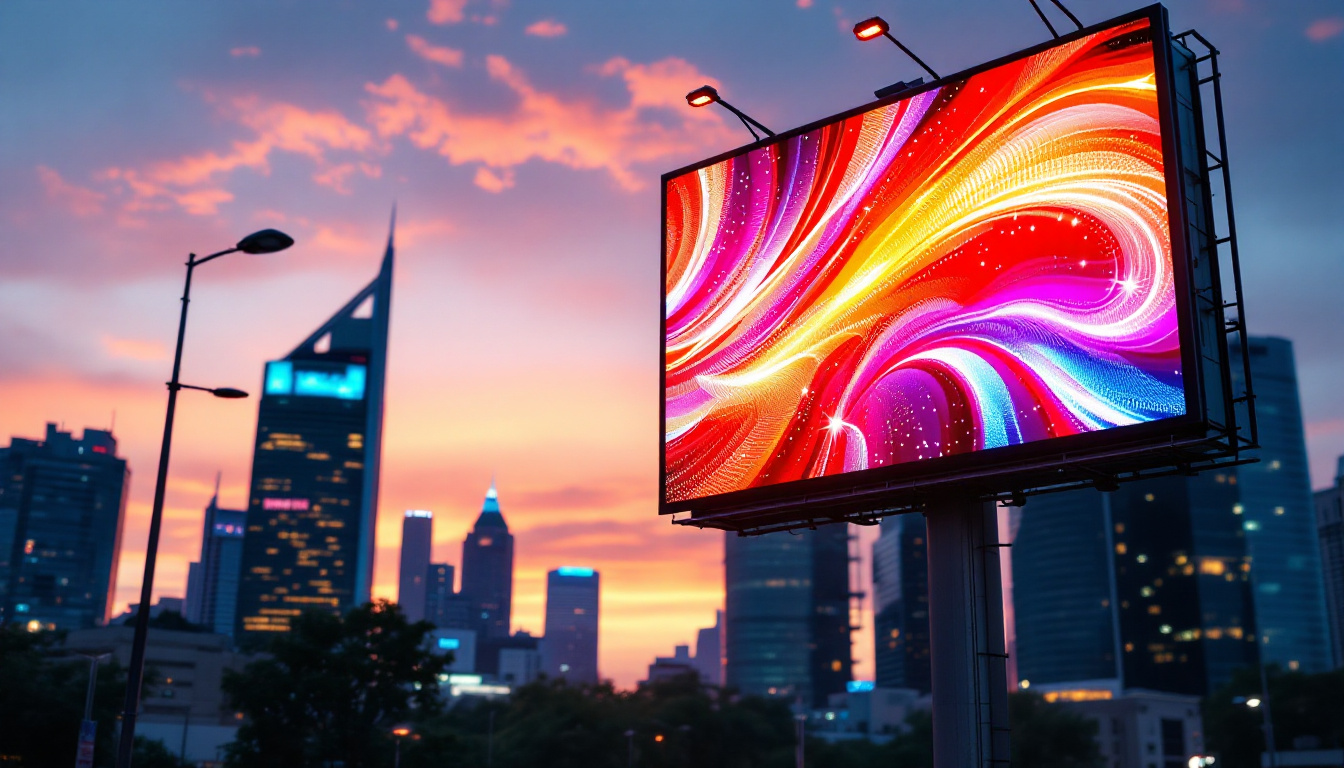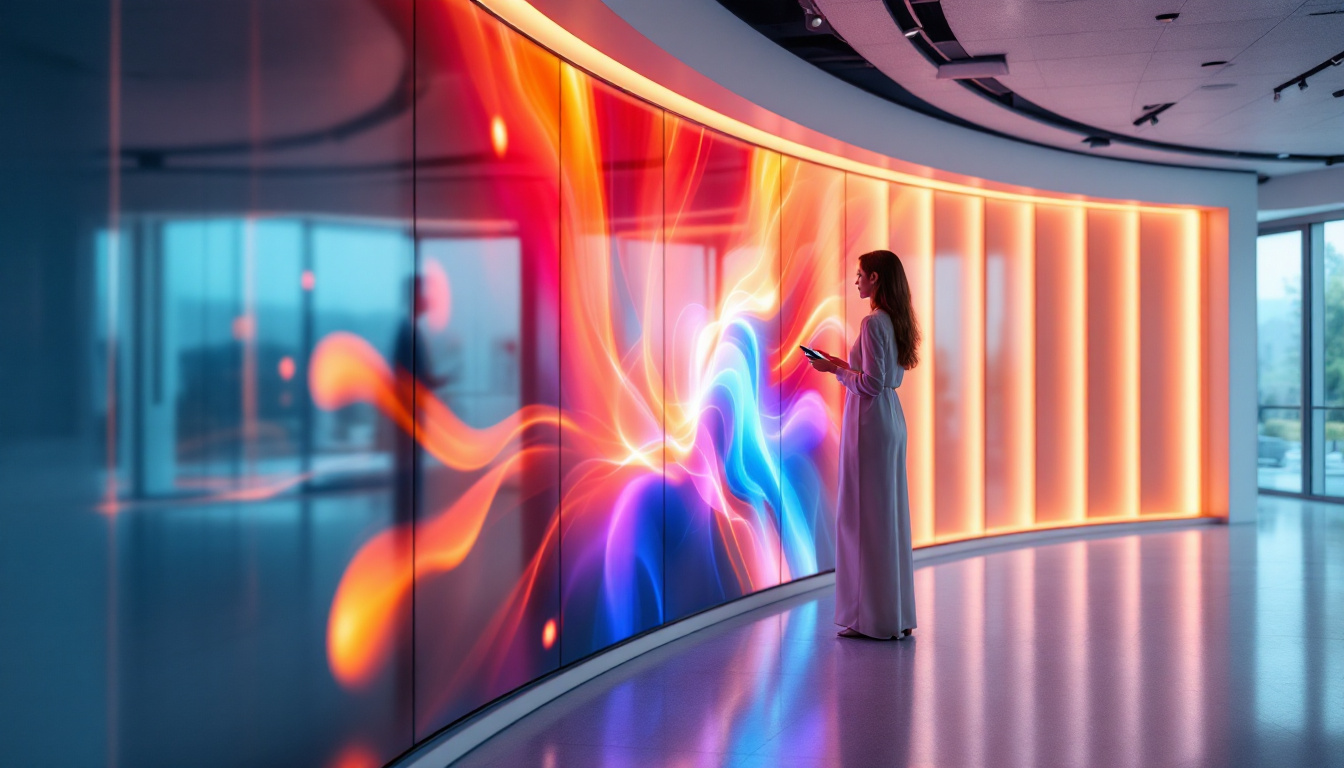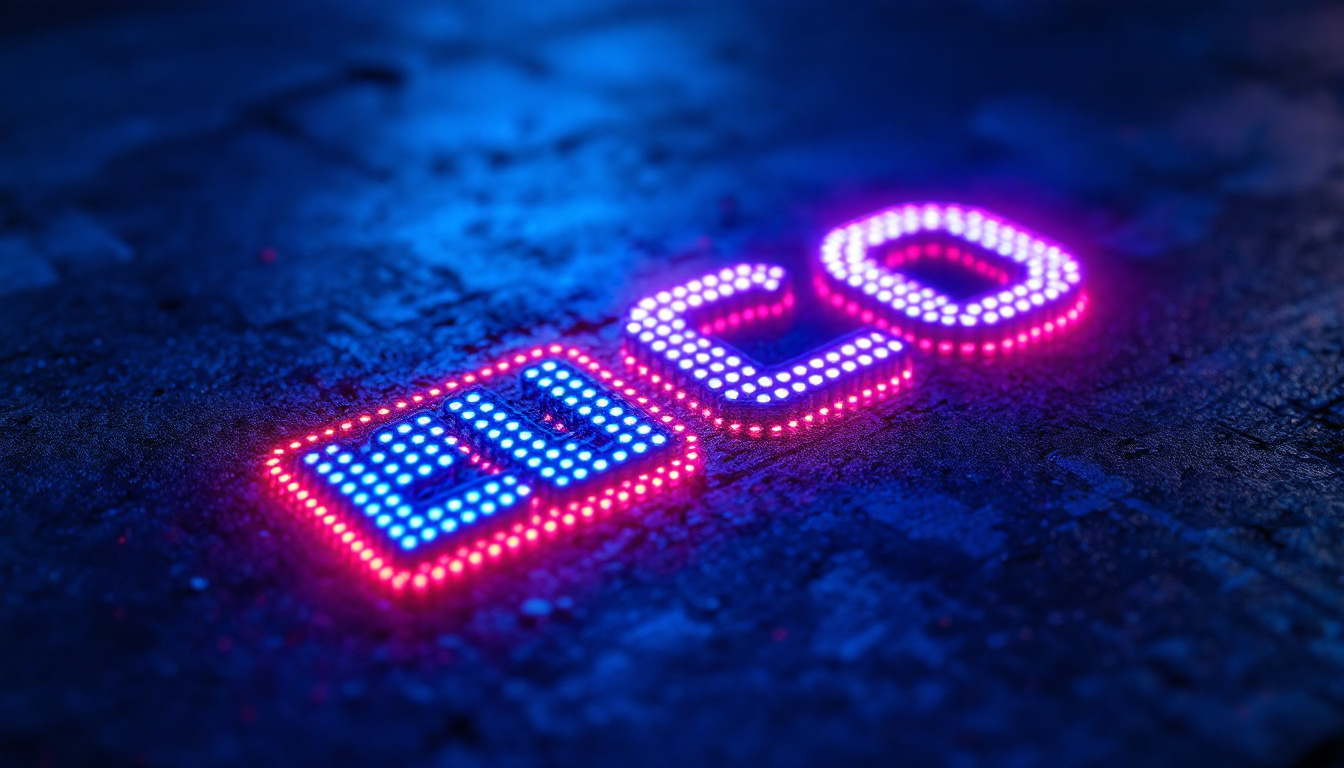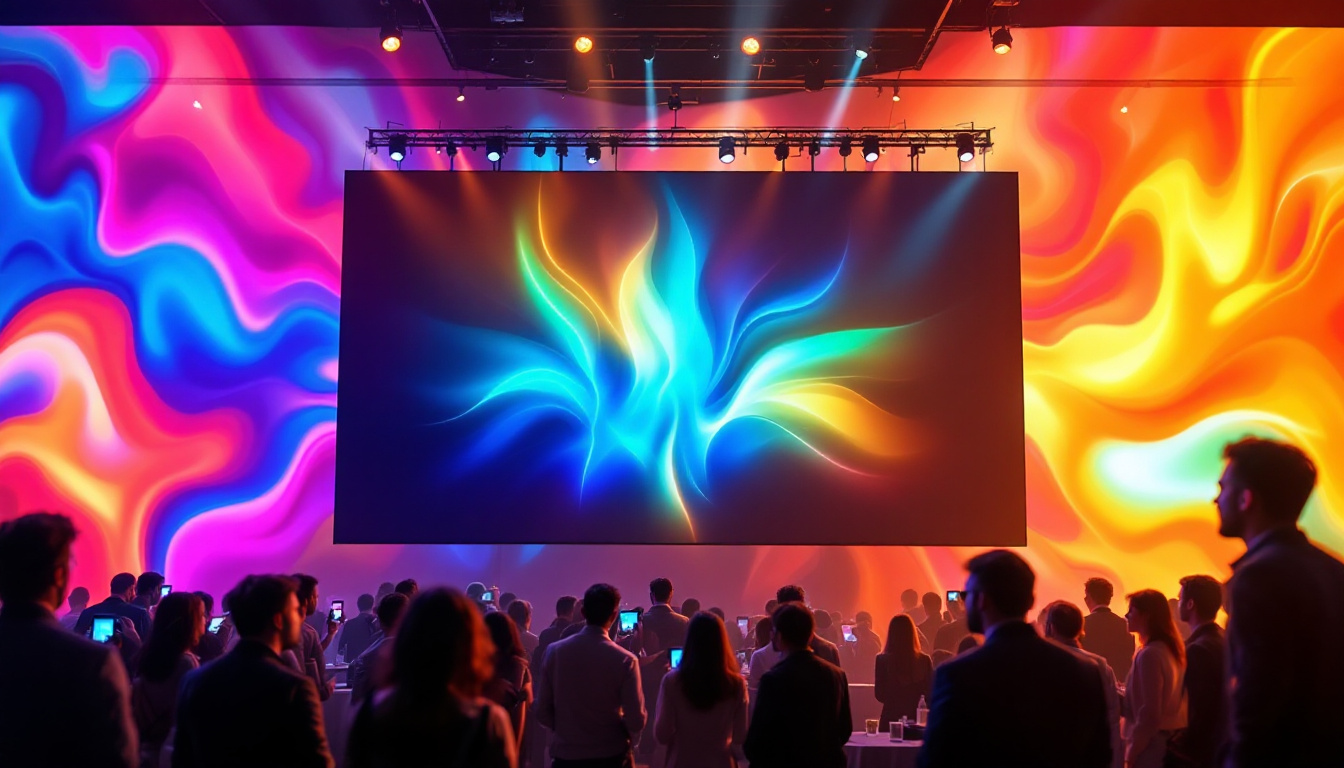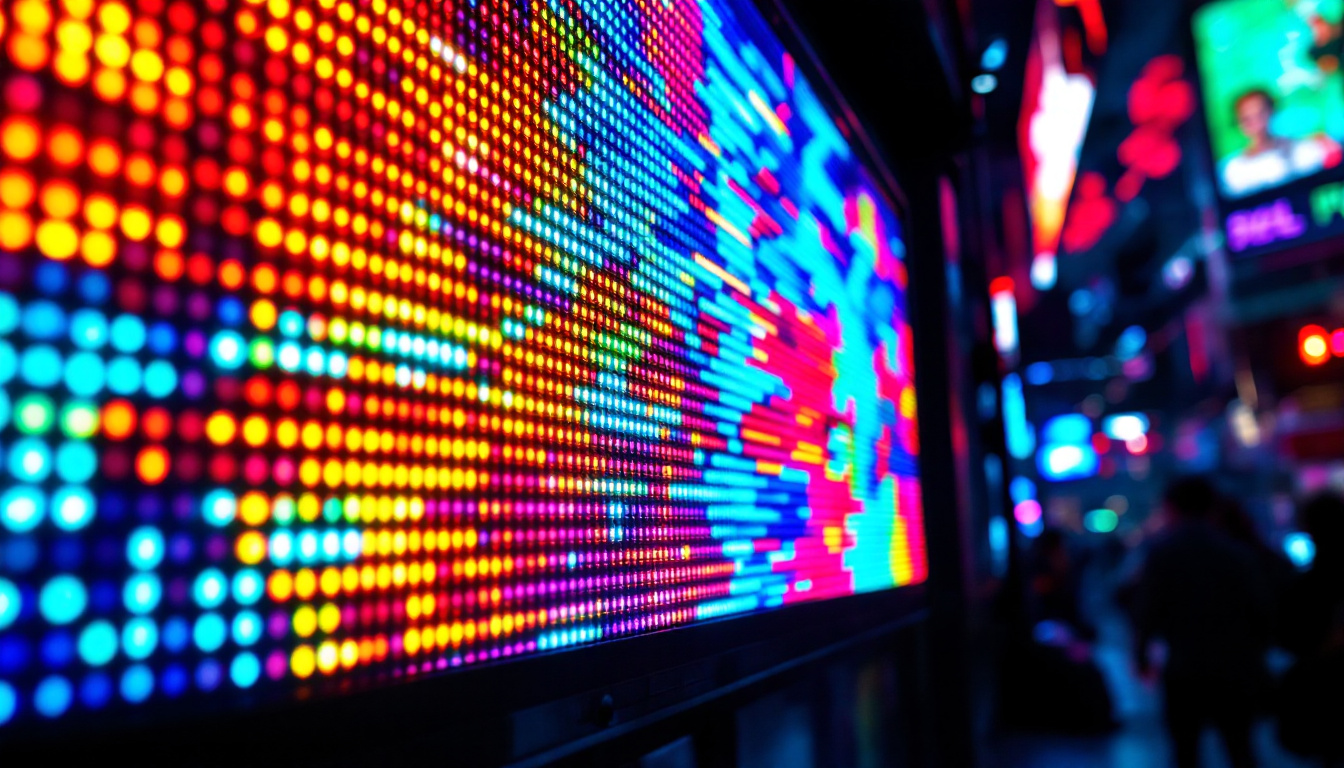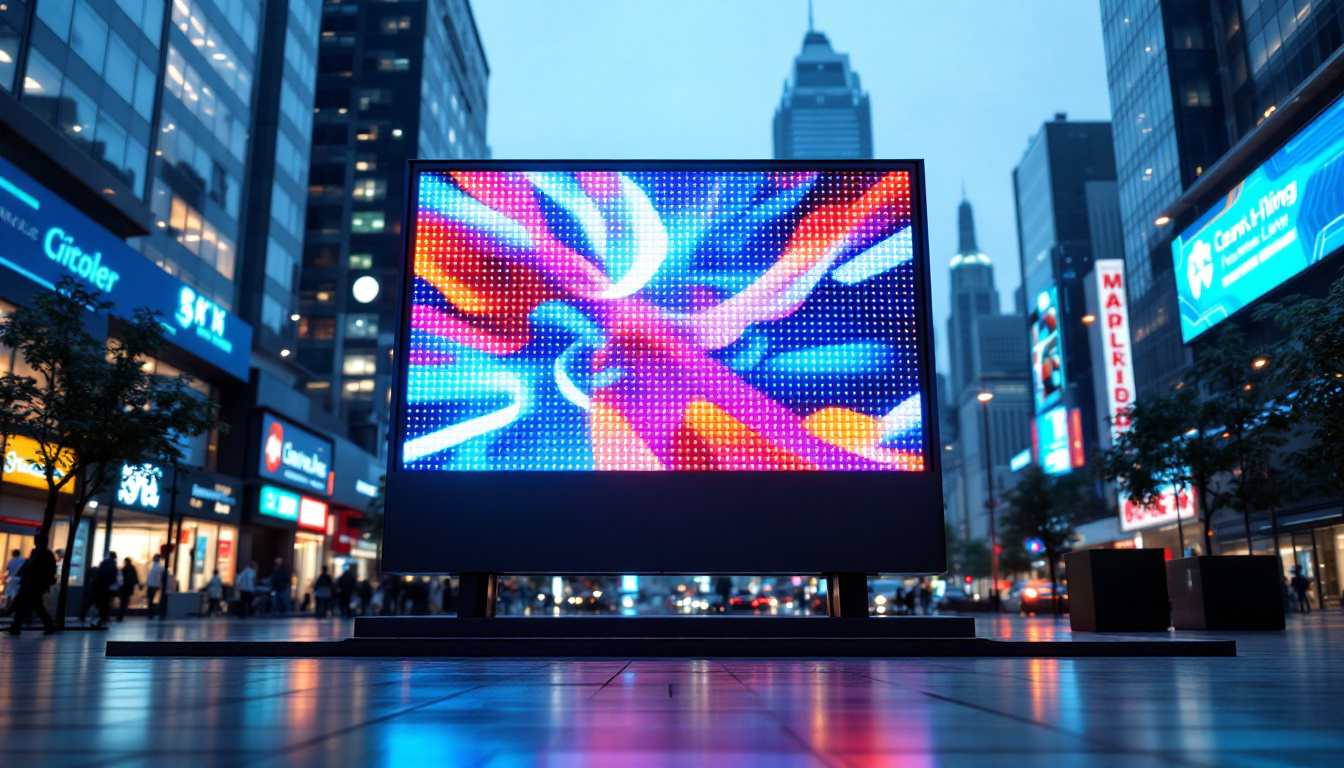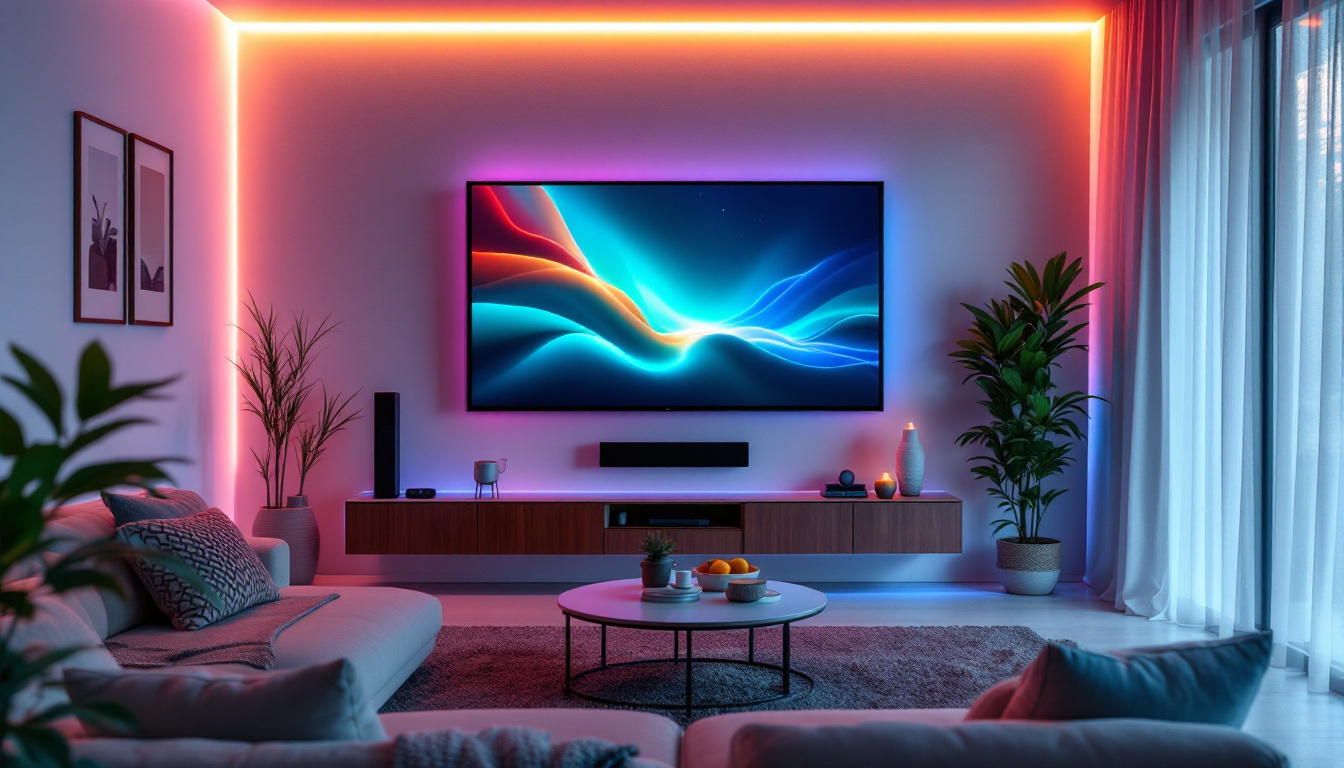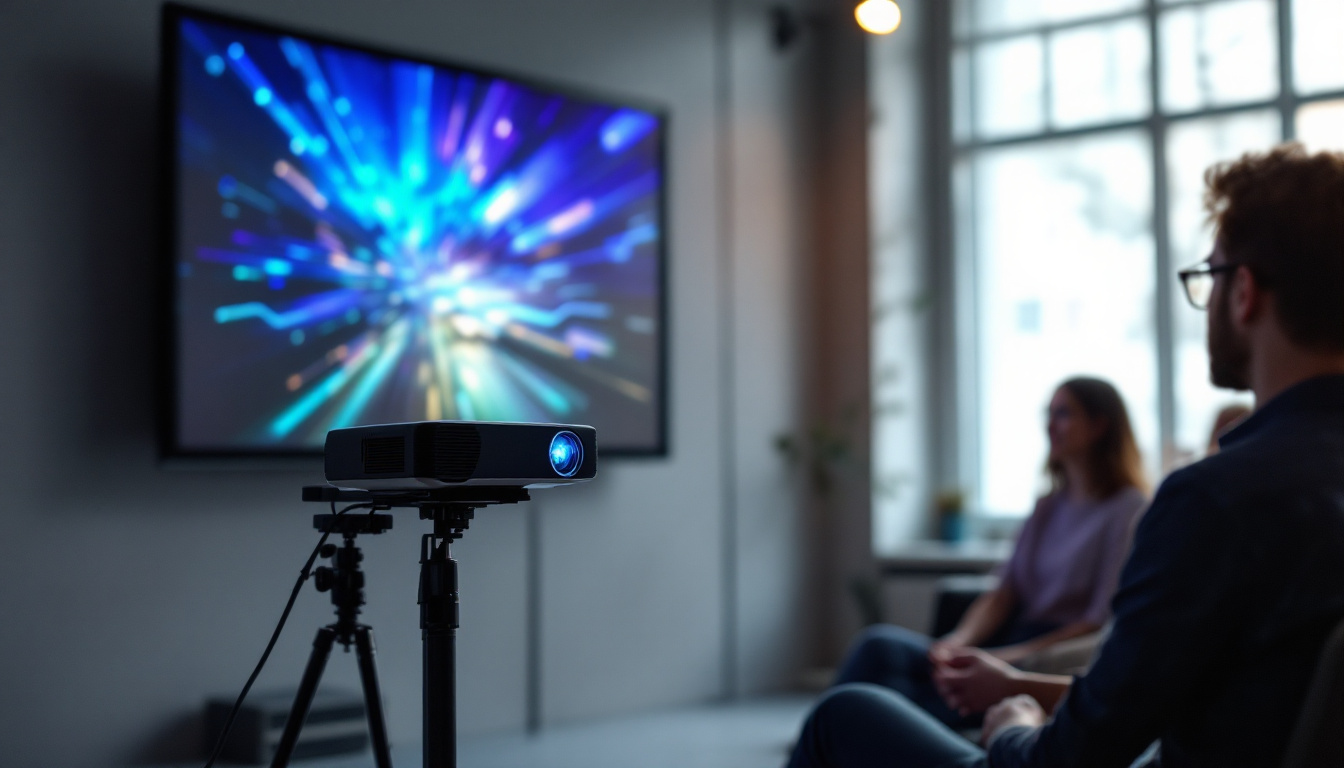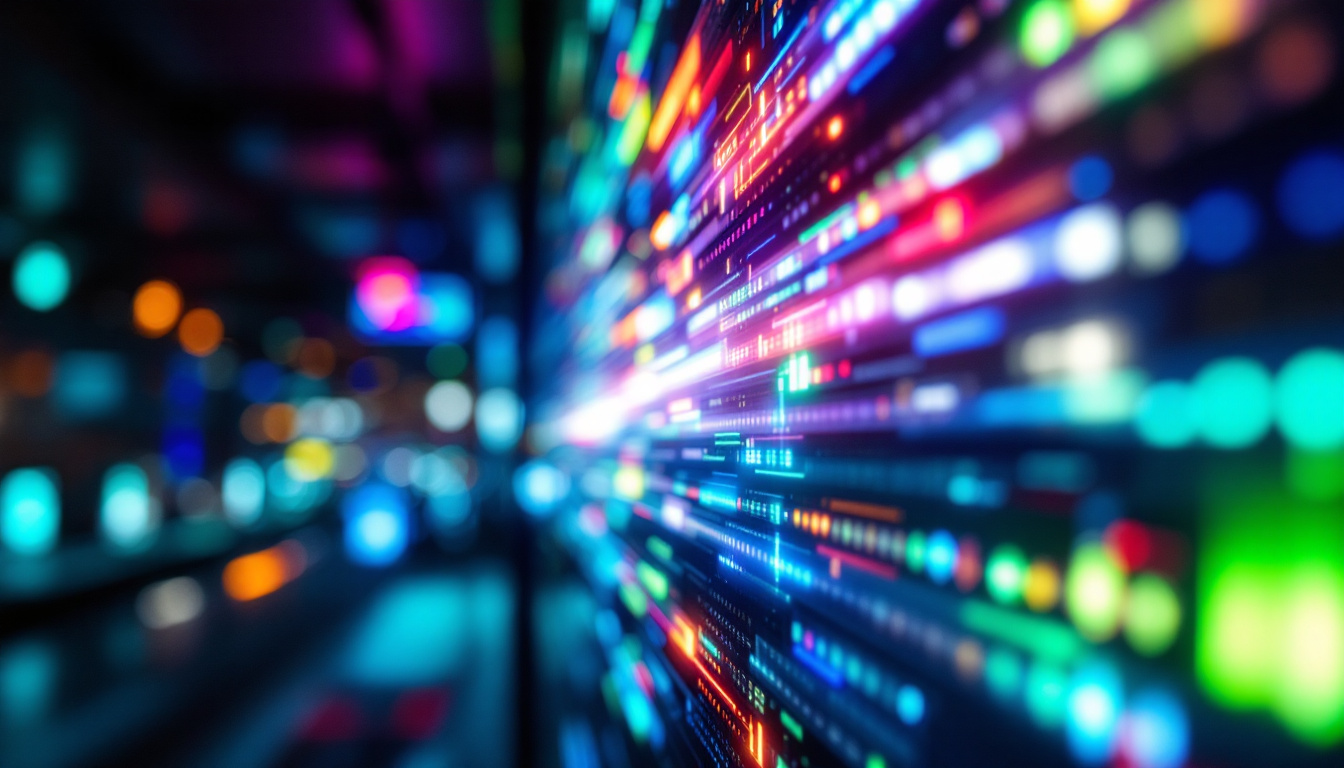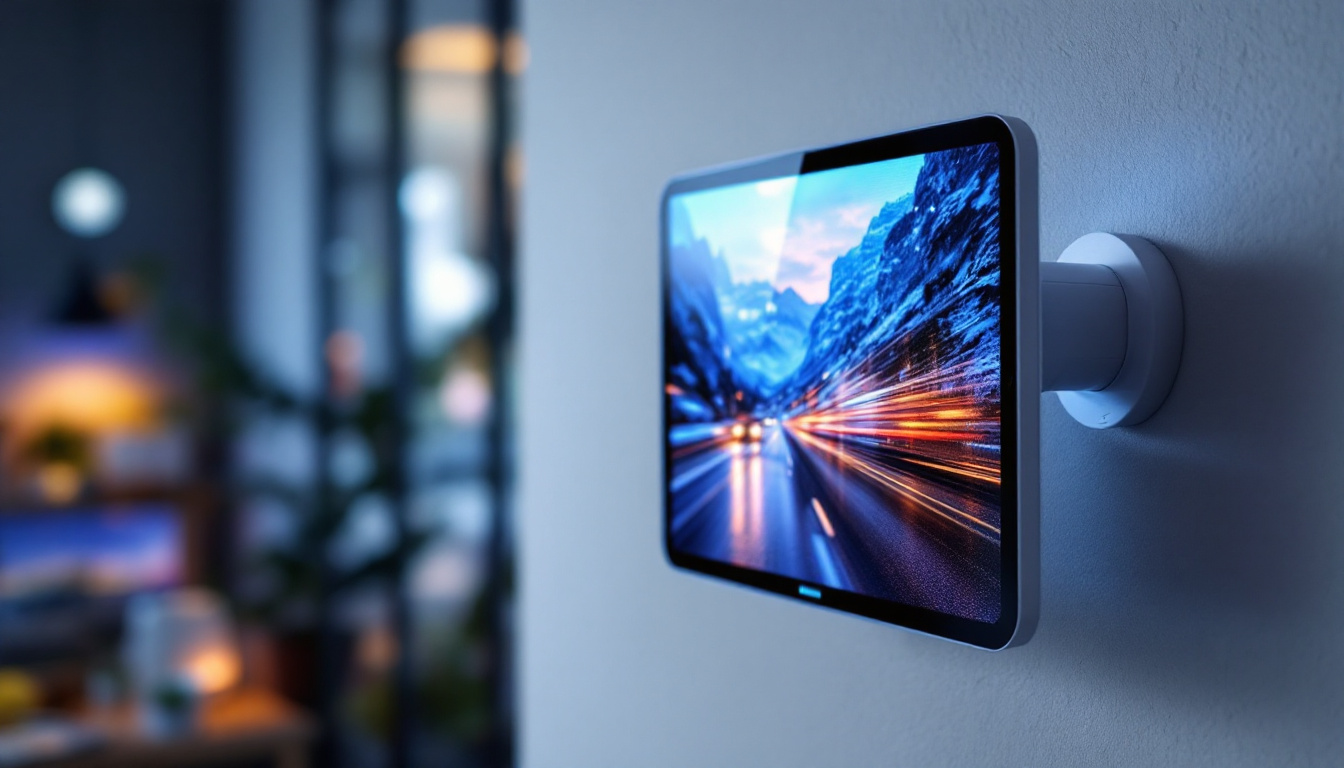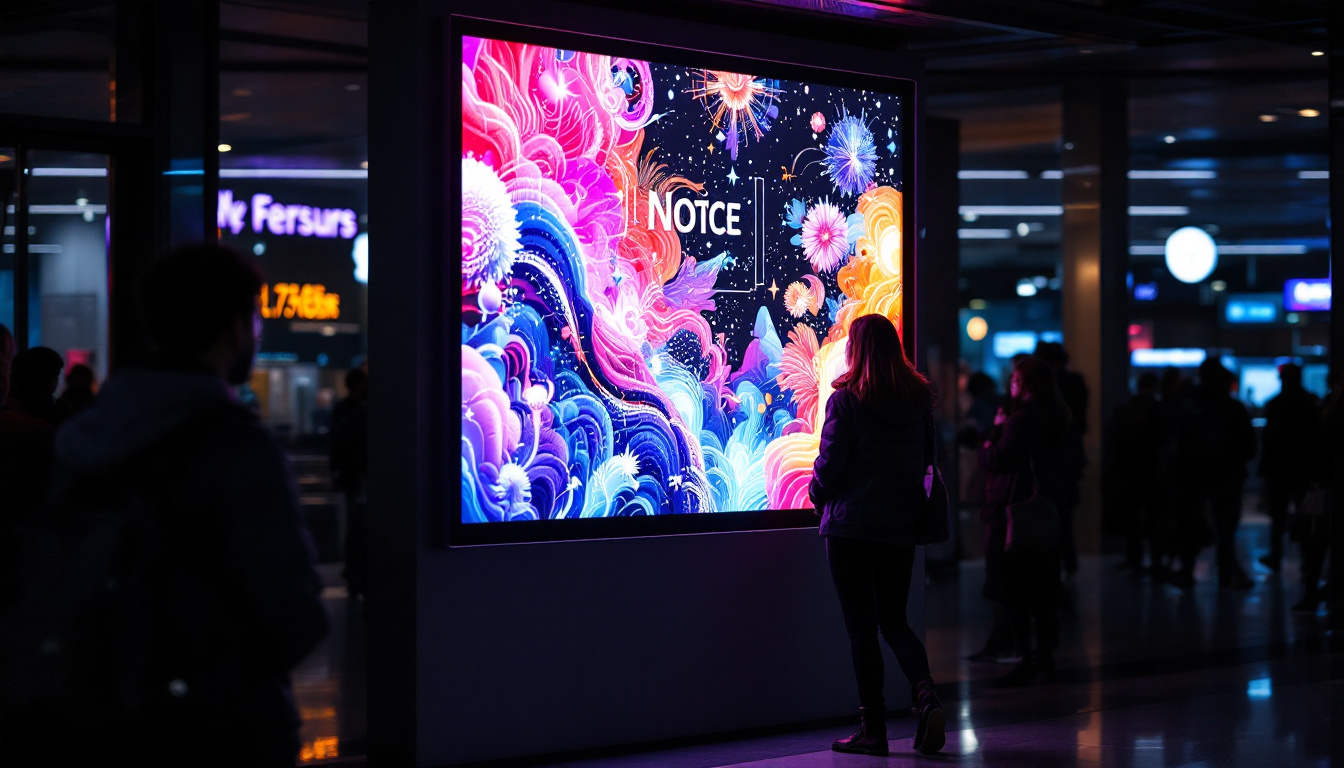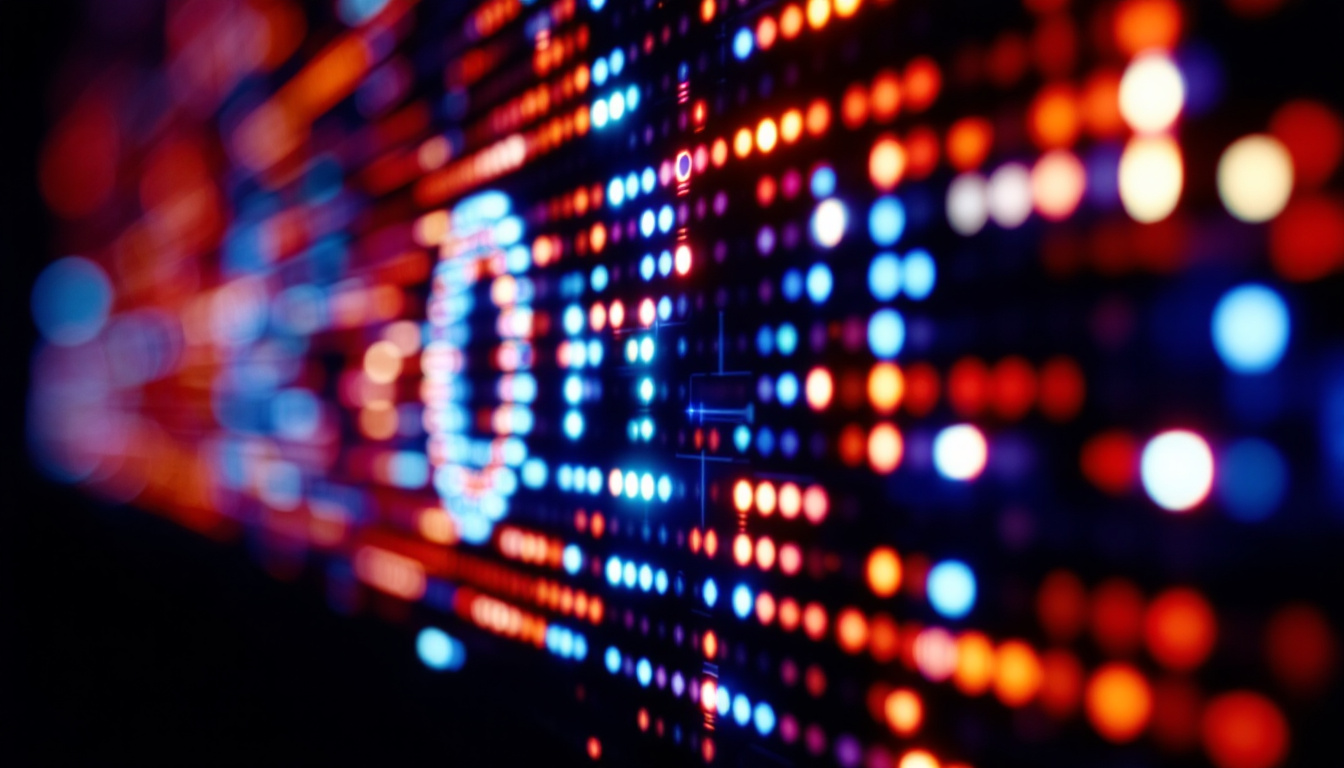In the ever-evolving world of technology, LED displays have emerged as a pivotal innovation, revolutionizing the way information is conveyed visually. From advertising billboards to television screens, these displays have become ubiquitous in modern society. This article delves into the intricacies of LED displays, exploring how they work, their various applications, and the future trends shaping this dynamic field.
Understanding LED Technology
LED, or Light Emitting Diode, is a semiconductor device that emits light when an electric current passes through it. This technology has transformed the landscape of visual displays, offering numerous advantages over traditional lighting methods. The fundamental principle behind LED technology lies in electroluminescence, where electrons recombine with holes within the device, releasing energy in the form of photons. The efficiency of LEDs is remarkable; they convert a significant percentage of electrical energy into visible light, making them far more energy-efficient than incandescent or fluorescent bulbs.
Moreover, the longevity of LED lights is another compelling factor. While traditional bulbs may last a few thousand hours, LEDs can operate for tens of thousands of hours, drastically reducing the need for replacements and maintenance. This durability not only contributes to lower operational costs but also minimizes waste, aligning with growing environmental concerns. As a result, LED technology is increasingly being adopted in various sectors, from residential lighting to large-scale commercial applications.
The Components of LED Displays
At the heart of an LED display are several key components that work in harmony to produce vibrant images. These include:
- LED Chips: The core of the display, these chips determine the color and brightness of the emitted light.
- Driver Circuitry: This component regulates the power supplied to the LEDs, ensuring consistent performance.
- Control Systems: These systems manage the input signals, allowing for the display of dynamic content.
Understanding these components is crucial for grasping how LED displays function and why they are preferred in various applications. The integration of advanced driver circuitry allows for features such as dimming and color adjustment, which enhance the viewing experience. Additionally, control systems can be programmed to sync with audio or other multimedia elements, creating immersive environments in venues such as theaters and concert halls.
Types of LED Displays
There are several types of LED displays, each tailored for specific uses. The most common types include:
- Direct View LED: These displays consist of individual LED modules that form a larger screen, ideal for outdoor advertising.
- LED-backlit LCD: This technology combines traditional LCD screens with LED backlighting, enhancing brightness and color accuracy.
- Organic LED (OLED): Utilizing organic compounds, OLED displays offer superior contrast and flexibility, making them popular in high-end televisions and smartphones.
Each type of LED display has its unique advantages, catering to different market demands and user preferences. For instance, Direct View LEDs are particularly effective in high-visibility environments, such as stadiums and billboards, where bright, eye-catching displays are essential. On the other hand, OLED technology is celebrated for its ability to produce deep blacks and vibrant colors, making it a favorite among filmmakers and content creators who prioritize image quality. Furthermore, advancements in microLED technology are paving the way for even smaller, more efficient displays that promise to revolutionize personal devices and large-scale installations alike.
Applications of LED Displays
LED displays are versatile and find applications across various sectors, including entertainment, advertising, transportation, and more. Their adaptability and performance make them a preferred choice for numerous industries.
Advertising and Marketing
One of the most prominent uses of LED displays is in advertising. Billboards and digital signage equipped with LED technology can capture the attention of passersby with vibrant colors and dynamic content. This capability allows businesses to convey messages effectively and engage with their audience in real-time.
Moreover, the ability to update content remotely and frequently makes LED displays a cost-effective solution for advertisers. Campaigns can be tailored to specific times of day or events, maximizing impact and reach.
Entertainment and Events
In the entertainment industry, LED displays have transformed the way audiences experience live events. Concerts, sports games, and festivals utilize large LED screens to enhance the visual experience, providing real-time updates, close-ups, and immersive visuals that captivate viewers.
Additionally, LED technology is integral to the film and television industry. Studios employ LED walls for virtual production, creating realistic backgrounds and environments in a controlled setting, thus revolutionizing how content is produced.
Transportation and Safety
LED displays are also crucial in transportation systems. From electronic road signs to airport information boards, these displays provide essential information to travelers. Their high visibility and ability to operate in various weather conditions ensure that critical messages are conveyed effectively.
Furthermore, LED technology enhances safety by alerting drivers to hazards, traffic conditions, and navigation instructions, contributing to smoother and safer travel experiences.
The Advantages of LED Displays
LED displays offer numerous advantages that contribute to their widespread adoption across different sectors. These benefits include energy efficiency, longevity, and superior image quality.
Energy Efficiency
One of the most significant advantages of LED technology is its energy efficiency. Compared to traditional lighting methods, LED displays consume significantly less power, leading to reduced operational costs. This efficiency is particularly beneficial for large installations, such as outdoor billboards, where energy consumption can be substantial.
Moreover, many LED displays are designed with smart technology that optimizes energy use based on ambient light conditions, further enhancing their efficiency.
Longevity and Durability
LED displays are known for their impressive lifespan, often exceeding 50,000 hours of operation. This durability translates to lower maintenance costs and less frequent replacements, making them a wise investment for businesses.
Additionally, LED technology is less susceptible to damage from shock and vibration compared to traditional displays, making them suitable for various environments, including outdoor settings and high-traffic areas.
Superior Image Quality
LED displays provide exceptional image quality, characterized by vibrant colors, high contrast ratios, and sharp resolution. This quality is particularly important in applications where visual clarity is paramount, such as advertising and entertainment.
Furthermore, advancements in LED technology have led to the development of high-definition and ultra-high-definition displays, allowing for even more detailed and immersive viewing experiences.
Challenges and Considerations
Despite their numerous advantages, LED displays also face challenges that must be addressed to maximize their potential. Understanding these challenges is essential for businesses considering the adoption of LED technology.
Initial Costs
The initial investment for LED displays can be significant, particularly for large-scale installations. While the long-term savings on energy and maintenance can offset these costs, businesses must carefully evaluate their budget and return on investment.
However, as technology advances and production processes become more efficient, the costs associated with LED displays are gradually decreasing, making them more accessible to a broader range of users.
Environmental Concerns
Another consideration is the environmental impact of LED displays. While they are more energy-efficient than traditional displays, the production and disposal of LED technology can pose environmental challenges. The materials used in LED manufacturing, such as heavy metals, require careful handling and recycling.
As the industry progresses, there is a growing emphasis on sustainability, with many manufacturers exploring eco-friendly materials and recycling programs to mitigate these concerns.
Technical Expertise
Implementing LED technology often requires technical expertise, particularly for installation and maintenance. Businesses may need to invest in training or hire specialized personnel to ensure optimal performance and longevity of their displays.
However, many manufacturers offer support and resources to assist businesses in navigating these technical requirements, making the transition smoother.
Future Trends in LED Display Technology
The future of LED display technology is promising, with several trends emerging that are set to shape the industry in the coming years. These advancements will likely enhance performance, usability, and environmental sustainability.
MicroLED Technology
MicroLED is an exciting development in the LED display realm. This technology involves using microscopic LEDs to create displays with higher resolution and improved color accuracy. MicroLED displays promise to deliver stunning visuals while maintaining the energy efficiency and longevity that LED technology is known for.
As MicroLED technology matures, it is expected to find applications in various sectors, including consumer electronics, automotive displays, and large-scale installations.
Flexible and Transparent Displays
Another trend gaining traction is the development of flexible and transparent LED displays. These innovative designs allow for creative applications, such as curved screens and see-through displays that can be integrated into architecture and retail environments.
Flexible displays open up new possibilities for product design and advertising, enabling brands to create immersive experiences that capture consumer attention.
Enhanced Interactivity
As technology advances, the demand for interactive displays is on the rise. Incorporating touch-sensitive technology and augmented reality capabilities into LED displays can create engaging experiences for users. This interactivity is particularly valuable in retail and entertainment settings, where engaging customers is essential.
By leveraging interactivity, businesses can foster deeper connections with their audience, driving brand loyalty and enhancing the overall customer experience.
Conclusion
LED displays have undeniably transformed the visual landscape, offering unparalleled advantages in energy efficiency, longevity, and image quality. As technology continues to evolve, the applications and possibilities for LED displays are expanding, paving the way for innovative solutions across various sectors.
While challenges remain, the future of LED technology is bright, with emerging trends such as MicroLED, flexible displays, and enhanced interactivity set to redefine how information is shared and experienced. Businesses looking to invest in LED technology should consider these factors carefully, ensuring they remain at the forefront of this dynamic field.
Ultimately, LED displays are not just a technological advancement; they represent a shift in how society interacts with information and experiences visual content. As the industry continues to innovate, the potential for LED displays is limitless, promising a vibrant future for both businesses and consumers alike.
Explore the Future of Visual Experience with LumenMatrix
Ready to elevate your visual communication and engage your audience like never before? Discover LumenMatrix’s innovative LED display solutions, where cutting-edge technology meets creative design. From vibrant Indoor and Outdoor LED Wall Displays to dynamic Vehicle and Sports Displays, LumenMatrix offers a diverse range of products tailored to your unique needs. Experience the revolution in digital signage and create unforgettable visual experiences with our Custom, All-in-One, and Transparent LED Displays. Don’t miss out on the opportunity to transform your brand’s visibility. Check out LumenMatrix LED Display Solutions today and step into the future of visual storytelling.

